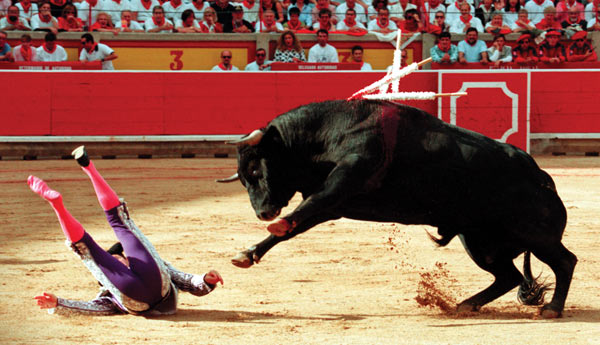“Buy Low, Sell High,” goes the old stock market wisdom.
But like most stock market wisdom, this is easy to mouth, but difficult to implement in real life. It is very difficult to buy when others are selling and vice versa.
The tendency is to go with the herd because there is safety in numbers. And if things don’t work out as intended, one has someone else to blame as well. “I only did what Mr Singh’s son recommended,” goes the argument.
The question is how do numbers look on this front? Do investors actually buy when market levels are low and sell when market levels are high. Or are they doing exactly the opposite?
Take a look the following chart. That is how the Sensex has looked between April 1, 2011 and March 31, 2016. As can be seen from the chart, the overall trend of the Sensex has been in the upward direction, though it did fall during the course of 2015-2016.

Now take a look at the following table.
| Year | Shares and Debentures (as a % of GNDI) |
|---|---|
| 2011-2012 | 0.2 |
| 2012-2013 | 0.2 |
| 2013-2014 | 0.4 |
| 2014-2015 | 0.4 |
| 2015-2016 | 0.7 |
Source: Annual Report of the Reserve Bank of India
The table shows the portion of gross national disposable income (basically the GDP number adjusted for a few other things. For a detailed treatment click here) made up for by investments in shares and debentures, which are a part of the household financial savings. In 2011-2012, shares and debentures made up for 0.2 per cent of the gross national disposable income. By 2015-2016, this had jumped up to 0.7 per cent. The household financial savings comprise of currency, deposits, shares and debentures, insurance funds, pension and provident funds and something referred to as claims on government. The claims on government largely reflects of investments made in post office small savings schemes.
What the table clearly tells us very clearly is that a very small portion of Indian retail investors invests in shares and debentures. In fact, these numbers also include the mutual fund numbers.
What do we learn from the chart and the table? As the Sensex went up, so did the investments in shares and debentures.
The trouble is that for some reason, which actually makes no sense, the RBI puts out the data for shares and debentures together. A breakdown of the total amount of money held in the form of shares (or debentures for that matter) is not available. But with the help of some other data we can prove that the Indian investor basically follows the policy of buying once the stock markets have rallied.
As on March 31, 2011, the total amount of money held in equity mutual funds in India had stood at Rs 1,69,754 crore. By March 31, 2016, this number had stood at Rs 3,44,707 crore. The assets under management increase in two ways. The first is because the value of the shares held by the mutual funds goes up. And the second is because of the fresh money being invested into the mutual funds.
As we can see the assets under management have more than doubled in the five-year period. On the other hand, the Sensex returns during the period stood at 30.5 per cent. Hence, it is safe to say that the major part of the increase in assets under management was because of new money coming into the mutual fund schemes.
And this new money kept coming in as the Sensex kept going up. Take the case of what happened between March 31, 2015 and March 31, 2016. The Sensex fell by 9.3 per cent during the course of the year. The assets under management of equity mutual funds on the other hand, went up by 12.8 per cent.
In fact, during the period, the Sensex achieved its highest level on January 29, 2015, when it closed at 29,681.77 points. Between then and March 31, 2016, the Sensex fell by 14.6 per cent. At the same time, the assets under management of equity mutual funds went up by 14 per cent.
This is a clear indication of the fact that investors actually invest in equity mutual funds only after the markets have rallied. Once the market has rallied, the investors probably assume that it will continue to rally.
Hence, I guess, it is safe to say that a similar behaviour is on when it comes to direct investing in stocks as well. And that (along with increase in mutual fund investments) explains why the share of shares and debentures has increased from 0.2 per cent of gross national disposable income in 2011-2012 to 0.7 per cent in 2015-2016.
Of course, one would be able to say this with much greater confidence if the RBI gave an exact breakdown of shares and debentures. I hope that this anomaly is corrected in the days to come.
The column originally appeared in The Five Minute Wrapup on September 7, 2016
